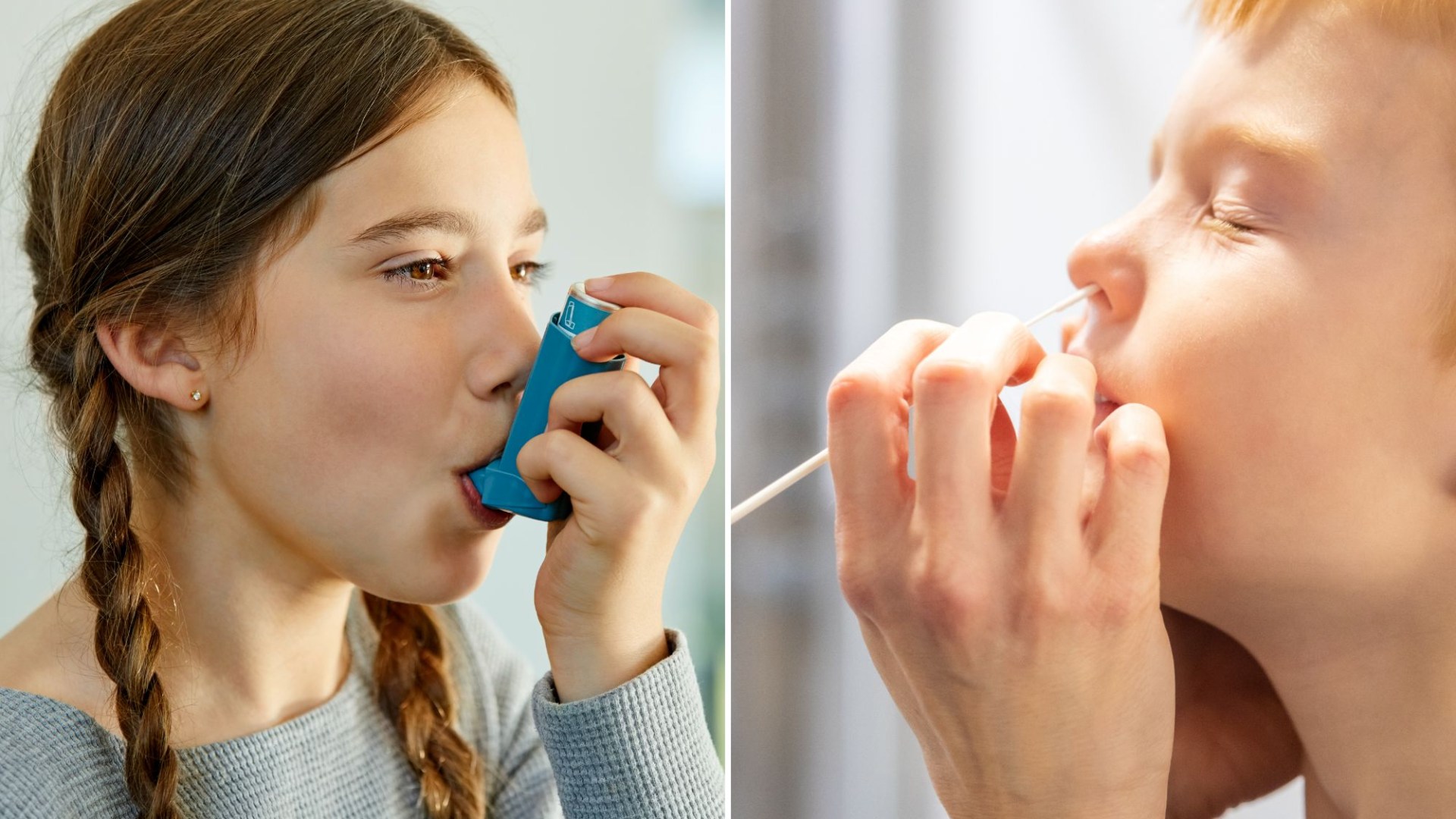A NEW nasal swab has been found to diagnose asthma in children far quicker than previous methods.
The test, developed by American researchers, is able to diagnose specific subtypes of asthma.
2
Traditional methods for diagnosing specific subtypes of asthma usually require surgery.
But the new approach will allow doctors to be able to prescribe medications more precisely and pave the way for research toward better treatments for lesser-studied asthma types, which have proved difficult to diagnose accurately until now.
The researchers’ findings, published in The Journal of the American Medical Association (JAMA), are based on data from three independent US-based studies that focused on Puerto Rican and African American youths, who have higher rates of asthma and are more likely to die from the disease than white children.
Study senior author Professor Juan Celedón, of the University of Pittsburgh, said: “Asthma is the most common chronic disease of childhood, and it disproportionately affects Black and Puerto Rican children, so it’s essential that we develop new therapies to better treat these young patients.
“Because asthma is a highly variable disease with different endotypes, which are driven by different immune cells and respond differently to treatments, the first step toward better therapies is accurate diagnosis of endotype.”
Traditionally, asthma has been classified into subtypes, or endotypes, known as T2-high or T2-low based on the amount of T helper 2 inflammation present.
More recently, T2-low has been split into two endotypes: T17-high, which has less T helper 2 inflammation and more T helper 17 inflammation, and low-low, which has low levels of both types of inflammation.
Precise diagnosis of endotype usually involves genetic analysis of a lung tissue sample taken by a procedure called a bronchoscopy, which is done under general anaesthesia.
For children, especially those with milder disease, researchers say it’s not feasible or ethical to perform the invasive procedure, so doctors have had to rely on imperfect tools, including immune markers in the blood, lung function and whether or not they have allergies.
Prof Celedón said: “These tests allow us to presume whether a child has T2-high disease or not.
“But they are not 100 per cent accurate, and they cannot tell us whether a child has T17-high or low-low disease.
“There is no clinical marker for these two subtypes. This gap motivated us to develop better approaches to improve the accuracy of asthma endotype diagnosis.”
How the study was carried out
The research team collected nasal samples from 459 youngsters across three different studies before analysing the expression of eight T2 and T17 signature genes.
Analysis of nasal swab samples revealed a patient’s endotype. Across studies, 23 per cent to 29 per cent of participants had T2 high, 35 per cent to 47 per cent had T17-high and 30 per cent to 38 per cent had low-low endotype.
For treating severe T2-high asthma, there is a powerful new class of drugs called biologics, which target the immune cells that drive disease.
However, no available asthma biologics directly target T17-high and low-low endotypes.
Prof Celedón said: “We have better treatments for T2-high disease, in part, because better markers have propelled research on this endotype.

2
“But now that we have a simple nasal swab test to detect other endotypes, we can start to move the needle on developing biologics for T17-high and low-low disease.”
He says the rapid test for asthma endotype could also help push forward other areas of asthma research.
Prof Celedón added: “One of the million-dollar questions in asthma is why some kids get worse as they enter puberty, some stay the same and others get better.
“Before puberty, asthma is more common in boys, but the incidence of asthma goes up in females in adulthood.
“Is this related to endotype? Does endotype change over time or in response to treatments? We don’t know.
“But now that we can easily measure endotype, we can start to answer these questions.”
Spot symptoms of asthma
Asthma is a common lung condition that causes occasional breathing difficulties.
It can affect people of all ages but usually starts in childhood.
There’s currently no cure but there are treatments to keep symptoms under control.
The most common symptoms of asthma are:
- wheezing (a whistling sound when breathing)
- breathlessness
- a tight chest – it may feel like a band is tightening around it
- coughing
These symptoms can be caused by many things, but it’s more likely to be asthma if they happen:
- happen often and keep coming back
- are worse at night and early in the morning
- seem to happen in response to an asthma trigger like exercise or an allergy (such as to pollen or animals)
If you think you or your child may have asthma, or you have asthma and are finding it hard to control, see a GP.
Doctors can prescribe inhalers, which are devices that let you breathe in medicine.
Tablets and other treatments may also be needed if your asthma is severe.
Source: NHS




